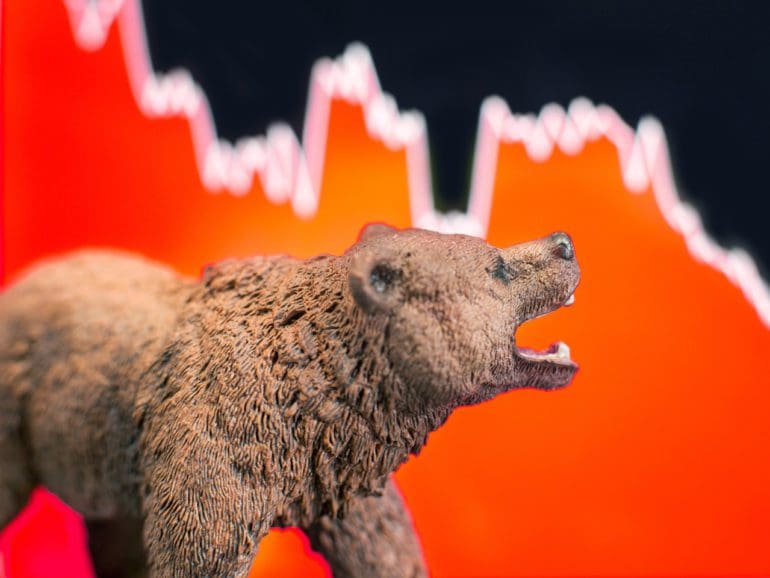Perhaps some newbies were caught off guard by the current crypto bear’s timing, but they shouldn’t have been, Lemniscap founder Roderik van der Graaf told Fintech Nexus News
Companies knew it was a wild market and were trying to raise money before the bear arrived.
“One way or another, everybody kind of knew that, at some point, it would turn, and it was getting a little bit too crazy,” van der Graaf said. “It’s hard to tell the depth and the length of this bear market because this time, it’s not only idiosyncratic within crypto; we’re a lot more integrated into the macro story.”
Experience in both the traditional and cryptocurrency markets has Lemniscap well-positioned during the current bear market, van der Graaf added.
Lemniscap is an investment firm specializing in investments in emerging cryptoassets and blockchain startups. Van de Graaf said he believes these fields will produce profound changes in the global economy.

He began his career in traditional finance, working as a trader of equity derivatives before progressing into private equity and merchant banking.
Along the way, van Der Graaf was an individual investor in startups and venture funds.
His involvement in crypto began in 2014 when a bitcoin-related startup approached him. Intrigued by the concept, he began to learn more.
Back then, the crypto community was small, and it was possible to get to know everyone.
Van de Graaf saw Vitalik Buterin speak in 2014 before ethereum’s public sale, which only whetted his appetite.
In 2017 he founded Lemniscap, seeing opportunities that may have been better than anything in TradFi at the time.
Why Lemniscap focused on the fundamentals
Credit van der Graaf for prioritizing fundamentals and having patience.
He said Lemniscap’s focus has always been on projects that are building fundamental building blocks the crypto world will need to enjoy long-term prosperity.
He’s watching newer developments such as NFTs and DeFi, saying the latter is a natural sector of interest, given his team’s experience in finance.
Lemniscap also benefits from having lived through the last crypto bear in 2018-19, van der Graaf said.
Throughout it, the firm stuck to its plans by investing in companies laying the foundation of a new space. That showed the community they were in it for the long haul and not likely to flee in a downturn.
Three reasons why this crypto bear is different
Van der Graaf learned his lessons, but he cautioned that the current crypto bear is different from the last one in three key ways.
Existential threats to the overall space have receded, and it is much more accepted, with topics debated in Congress.
The user base has exploded since then, too, bringing investor interest and a quicker pace of development. In 2018 prospective investors told van der Graaf there were no users in the space, and they were right. They missed out, but they were right in their way.
That reminds him of how some brush off NFTs and DeFi, saying they are only for speculators. Perhaps, but speculative assets attract interest too.
“We’re not yet at mass adoption levels yet, but we’re nowhere near the same situation (as 2018),” van der Graaf said.
The third difference is significant capital flowing into the space, including plenty from traditional finance types. In 2018 it was primarily pioneers.
Early Lemniscap successes
Two of Lemniscap’s early successes were in The Graph and Avalanche. The Graph is an indexing protocol for querying networks like ethereum and IPFS. It allows developers to build and publish open APIs, called subgraphs, that improve data accessibility. Avalanche is an open-source platform for launching highly decentralized applications, new financial primitives, and new interoperable blockchains.
Three key areas to watch in blockchain
Van der Graaf said he also quickly saw the significance of decentralized autonomous organizations (DAOs) before they became popular. He cited Tally as one to watch. It is a platform for decentralized governance participation which empowers user-owned governance through real-time research and analysis, governance tooling, and evergreen educational content. Social and community tokens were also identified early on.
The amount and pace of development have surged since then, van Der Graaf added. It’s not a community where everyone knows each other. Investors cannot follow everything, so they must be disciplined about where they spend their time.
Another crucial decision van Der Graaf made early was to envision and back a multi-chain world, believing it would enhance efficiency and overall desirability. That led to supporting alternative Layer ones like Avalanche.
Related:
“Redundancy is good,” van der Graaf said.
Another focus was scalability, which led to Lemniscap backing Layer 2s like Aurora. Aurora is an ethereum Virtual Machine built on the NEAR Protocol. It allows ethereum developers to create dApps on a high-throughput, scalable, and future-safe platform with low transaction costs.
Interoperability is a crucial step toward success, and it is underway.
“We firmly see that as the next natural phase, these things would start to integrate and become a world of blockchains that can communicate with each other and be completely separate,” van der Graaf said.
Centralized exchanges or DEXs?
Another bet that paid off was backing FTX, a cryptocurrency derivative exchange offering leveraged tokens, volatility products, OTC trading, and quarterly and perpetual futures. Van der Graaf said both centralized and decentralized exchanges have their places.
“Our view on that is not that centralized exchanges are bad and decentralized exchanges are good,” he explained. “It will continue to coexist as it does today. We don’t see that as a winner takes all, and all becomes decentralized. There are use cases where centralized exchanges are very fruitful.”
Building credibility and surviving bears
The industry must also address credibility concerns raised by events like the Terra Luna collapse, van der Graaf stressed. One TradFi company failing is a drop in the ocean, but the effect in DeFi is more significant, the total toll likely yet to be seen.
“Many thought 2022 was going to be a tough year, but it may be playing out worse than expected,” van der Graaf said.
It’s natural for people to drop out during bears, he added. That leaves more opportunity for those who are stuck around like Lemniscap. Van der Graaf suspects many investors are taking a wait-and-see approach. That’s good news for Lemniscap.
“So I can’t say we enjoy bear markets, but from a pure investment point of view, it’s healthy,” van der Graaf said. “We can go back to having serious discussions and talk to teams at length and make our decisions more thoughtfully.”
Be patient as the industry matures
More people should stick around through this bear, hopefully making for a wiser overall industry, but that will evolve incrementally, and more patience is required.
“There’ll be, I guess, a lot of projects disappearing and being replaced by new ones, hopefully with some lessons also learned on what not to do in bull markets,” van der Graaf said. “There are the… ideal use cases for crypto where you cut out the middleman and even could have a decentralized Twitter or decentralized Facebook, which would be very nice things.”
Some of those nice things cannot yet be built, but the industry is maturing. Still, there is a long way to go before the deck is complete. There will be some wreckage on the side of the road to success.
“It’s expected that there will be many things that don’t work out, but I guess in crypto, that quantity is a little bit higher,” van der Graaf said. “In bull markets, it’s perhaps too easy to raise money. At least in traditional tech and venture, it’s mostly VCs and some angels. But in crypto, people sometimes raise money openly from the public, in phases of euphoria. They make themselves look good and get funded, even though they shouldn’t be.
“That’s the downside of permissionless systems and open finance. It’s part of the process. It’s destructive; in a way, it’s wasteful, but it’s part of it.”


